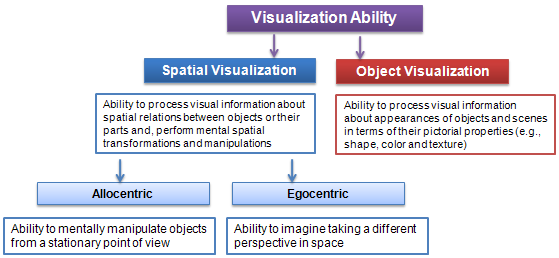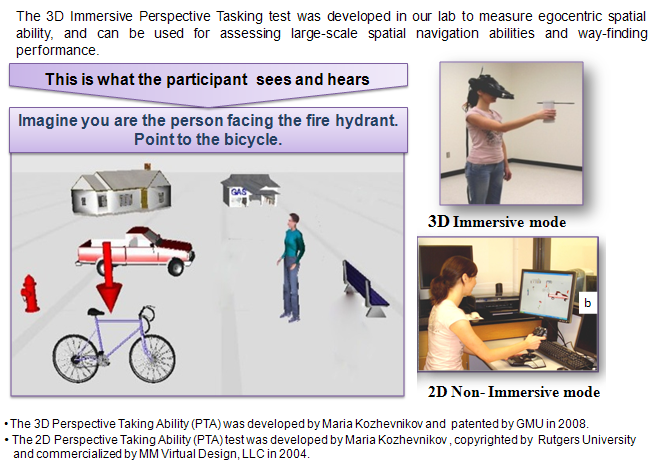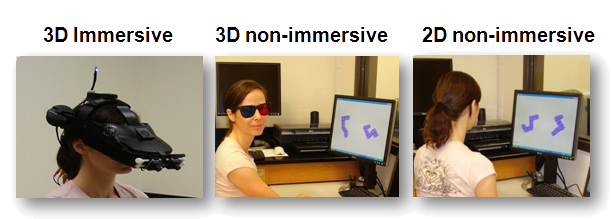Mental Imagery and Human-Computer Interaction Lab
Development of Spatial Ability Tests
Our research has demonstrated individual differences in visualization abilities; i.e., dissociation between object and spatial visual abilities (Kozhevnikov, Kosslyn, & Shephard, 2005), and a further distinction between spatial allocentric and spatial egocentric abilities (Kozhevnikov & Hegarty, 2001). Although allocentric and egocentric spatial abilities are correlated, they were also found to have distinguishable characteristics and showed different relationships to real world performance (Kozhevnikov, Motes, Rasch, & Blajenkova, 2006; Kozhevnikov & Hegarty, 2001; Kozhevnikov, Blazhenkova, & Becker, 2010).

Our lab has developed unique tests for assessing egocentric mental transformation ability, the 2D and 3D Perspective-Taking test, which reliably predict spatial navigation performance (i.e., spatial navigation and orientation). This Test is currently used for testing the spatial abilities of navigators, pilots and, also, in Man-Vehicle Laboratory at MIT for predicting astronauts’ spatial orientation skills.
Perspective Taking Test:


